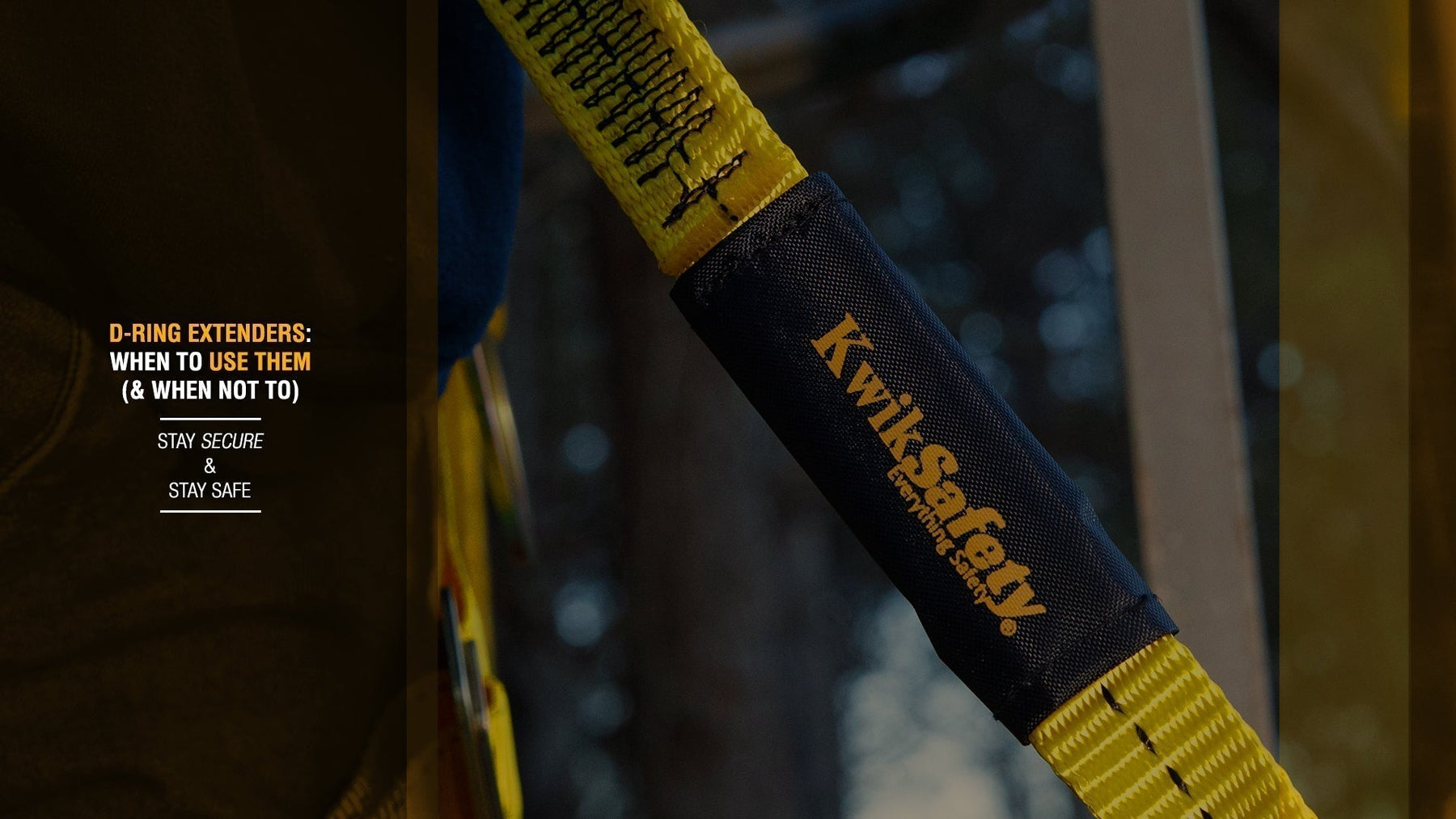Free Shipping | 30 Day Returns | Mix & Match Sitewide
Free Shipping | 30 Day Returns | Mix & Match Sitewide

When it comes to fall protection, every component plays a critical role in keeping workers safe—including the humble D-ring extender. This small accessory can make donning a harness easier and improve workflow, but it can also create safety risks if used improperly.
Let’s dive into when D-ring extenders are a smart addition to your PPE—and when they’re best left out of your setup.
___________
A D-ring extender is a short lanyard—typically 18" to 24"—that connects to the dorsal D-ring on your safety harness. It relocates the anchorage connection point to a more accessible position, making it easier to attach a self-retracting lifeline (SRL) or shock-absorbing lanyard without assistance.
Common Materials:
100% polyester webbing or reinforced synthetic fibers
Snap hook or rebar hook on one end
D-ring or looped eyelet on the other
___________
In situations where a worker can’t reach the back D-ring—due to limited mobility, bulky gear, or thick clothing—an extender brings the connection point forward for easier, safer attachment.
Some harnesses sit low on the back, making it hard to clip in. A D-ring extender solves this by raising the connection point to shoulder level.
If you’re using an SRL in a vertical application (e.g., on a ladder or bucket lift) and need to reduce time spent fiddling with gear, extenders improve ergonomics and efficiency.
___________
Despite their benefits, D-ring extenders aren’t always the safest choice. In certain situations, they can increase the risk of injury in a fall.
By extending the connection point up to 2 feet higher, they add to your total fall distance—which could mean the difference between a safe stop and hitting the ground or a lower level. Always recalculate your minimum fall clearance when using an extender.
📌 Example: A 6’ free fall + 3.5’ lanyard deceleration + 2’ D-ring extender + 1’ safety margin = 12.5 feet of required fall clearance.
Using a D-ring extender with a shock-absorbing lanyard can interfere with how force is distributed in a fall, possibly exceeding ANSI’s maximum arresting force (usually 900–1,800 lbs depending on the system).
Leading edge-rated SRLs must maintain strict fall clearance distances due to the higher shock loads involved. Adding an extender could disqualify the system from being compliant.
___________
Not all harnesses are designed to work with extenders. Here’s what to look for:
Labeling: Check if the manufacturer allows D-ring extenders for your specific harness model.
Load Ratings: Make sure the extender matches the ANSI Z359.13 or OSHA 1926 Subpart M requirements.
Inspection Access: Extenders must be visually inspected before every use, just like any fall protection gear.
___________
D-ring extenders improve accessibility but reduce your fall safety margin. They’re a useful tool—when applied correctly—but they require extra attention to clearance, compatibility, and system dynamics.
If you're unsure, consult your fall protection program manager or review your site’s fall hazard assessment. When in doubt, safer options like front D-rings or rescue-rated harnesses may offer a better alternative!
Follow us on social media to stay up-to-date on new products and much more!
Leave a comment